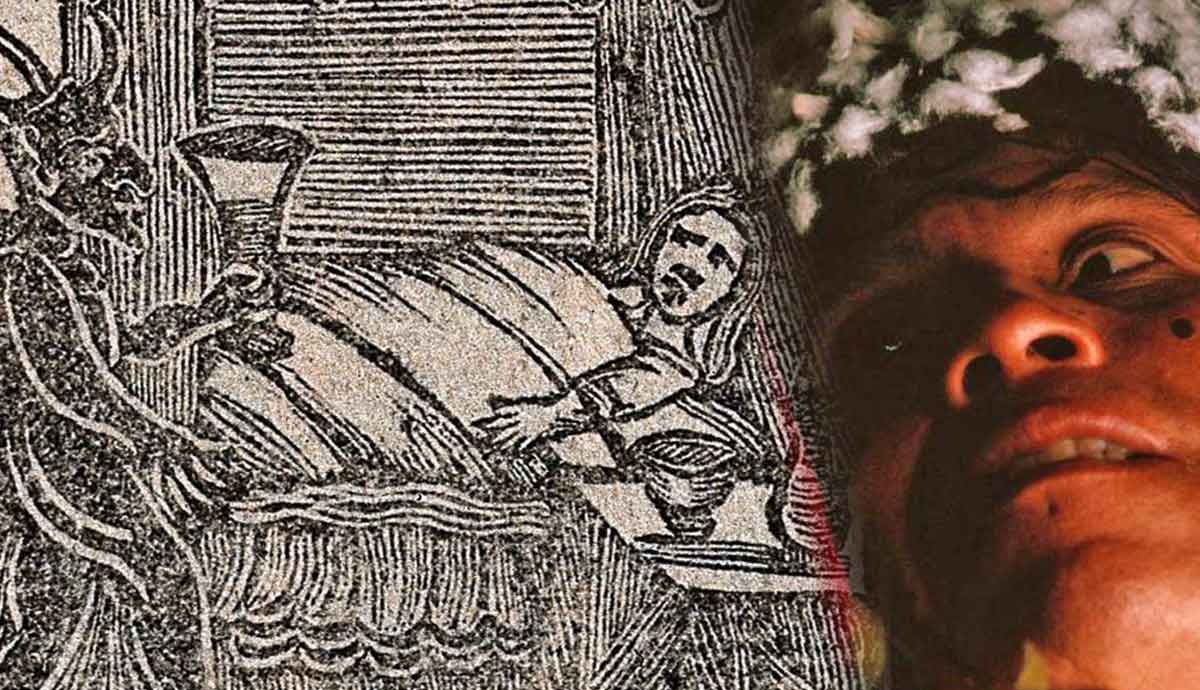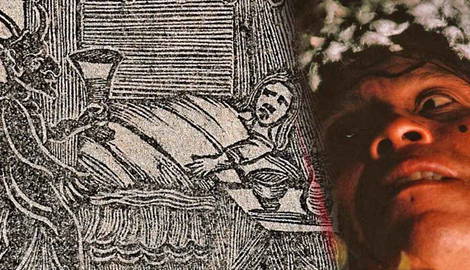
Witchcraft has existed in almost every culture throughout time. Due to the great mixing of customs in Latin America during the colonial period, a new form of witchcraft, or brujería, was born, blending the traditions of European, Native American, and African cultures. Accusations were often used to oppress women, but the practice of witchcraft could also empower them. Though witchcraft has largely fallen out of practice, there are still some cultures that participate in magical rituals today.
The Mixing Pot of South American Magic

Brujería, or “witchcraft” in Spanish, has come to describe a multitude of practices descended from European, Native, and African belief systems. These practices were most often seen during the years of the colonial period when tensions between Spanish and Portuguese colonizers, Native Americans, and enslaved Africans were high. Those who practiced witchcraft were targeted by the Inquisition and made to atone for their sins of heresy, either through repentance or torture. Though accusations of witchcraft were often used to suppress women who were underrepresented, in some cases, the practice served to protect non-European women within these colonized areas.
Though accusations of witchcraft are no longer the death sentence they were in the colonial period, there are still some isolated groups that take part in this dying practice. However, because of increased research on traditional healing and spiritual beliefs, some younger people are beginning to show a revived interest in learning about the magic of the past.
Hechicería vs Brujería: Healing and Witchcraft

The Spanish colony of Mexico was one of the places where brujería began to develop from a mix of Catholic faith and Indigenous herbalism. This practice was divided into two related but distinct categories—hechicería (“sorcery”), which encompassed natural and herbal magic, and brujería, which involved consorting with demons. Though the Inquisition paid little attention to so-called witchcraft in Mexico and often only asked for repentance as punishment, accusations of witchcraft ran wild. Anything from an incurable illness to dead livestock could be evidence of a witch, or bruja. The targets of these accusations were usually lone women, especially widows and spinsters, as well as midwives. Women were seen as lustful, fickle, and imperfect, which made them the perfect target for the temptations of the devil.
One notable Inquisition case in Mexico was the trial of Isabel de Montoya between 1652 and 1661. She was the daughter of a mulatta woman and made a living as a cook, healer, and midwife. After being accused of witchcraft, she was jailed for three years. Isabel claimed she had learned her trade from another mixed-race woman who showed her how to cast spells to tame a violent husband or to bring luck to clients. Most of the implements she used in her trade were simple—beans, pieces of coal and silver, various herbs, and chocolate. Interestingly, during her trial, Isabel admitted that she would occasionally give her clients a spell that would cause the opposite effect to the one desired. After her trial, not much more was heard of Isabel de Montoya, and she disappeared from the record just like other accused witches.
Brazil’s Witch Affliction

Colonial Mexico wasn’t the only place where witchcraft thrived and was condemned by the Catholic Church. Since the very early explorations of Brazil, Portuguese colonists had asserted that the type of spirituality practiced by native Brazilian shamans was nothing more than magic. It was in Brazil in 1591 that Paula de Siqueira confessed that she had been learning spells in order to win the love of her husband. This confession was followed by a handful of other witchcraft accusations, all leveled at Brazilian women.
Brazil’s colonial period saw a rapid increase in the types and prevalence of witchcraft being practiced among its female population. This increase in witchery was accompanied by a rise in religious dogma that persecuted anyone who practiced it. Brazilian witchcraft was different from the Mexican variety in that it often integrated African religious elements into its core. However, like Mexico, the Brazilian Portuguese distinguished the feiticeira, or sorceress, from the bruxa, a woman who had a pact with the devil. From the 1500s to the 1600s, Brazil hosted multiple visits from the Portuguese Inquisition, hoping to weed out anyone who was participating in acts that went against the beliefs of the Catholic Church.

In the manual for Inquisitors, magic, and witchcraft were listed as some of the most grievous sins, and those who had witnessed them were obligated to report it to the Inquisition. Records state that at least 700 Brazilians came forward during these proceedings, either to confess to witchcraft or to notify inquisitors about suspected magical activities. Many of these women had simple explanations for their involvement in witchcraft—they wanted a man to love them, to catch a thief, or to rid themselves of a pesky son-in-law. Those who wished to report heretical acts stated that witches had cursed their children, causing them to develop strange marks and illnesses that eventually left them dead. Those who were accused could expect to be imprisoned, whipped, or executed. Meanwhile, those who had confessed and shown remorse were given mercy and expected to repent.
Guatemalan Magic: Reclaiming Female Power

The magic that Guatemalan women practiced during and after the colonial period was distinguished by its violence. In a time when many native Guatemalan and African women were subjugated by Spanish colonial men, witchcraft gave them a way to create fear in the hearts of their abusers. One example of such violence is a story told by Padre José de Quevedo in which he claimed two women used witchcraft to attack him due to an ongoing dispute. In his story, he was awoken by the spirits of two women, Lorenza de Molina and Mariá de Santa Inéz, who bound and blindfolded him before viciously beating him. He asserted that he awoke the next morning in his bed covered in wounds. Through their supposed witchcraft, Lorenza and Mariá had taken control of a man’s body in a reversal of the typical control a colonial man had over a Native or African woman.
In another case, one woman claimed that her servant had been targeted by a witch and had taken to throwing up objects as strange as pieces of cloth, teeth, cigars, hair, and charcoal. Bodily fluids were another common theme in Guatemalan magic, often used to evoke love from a man or to sway someone in the magic user’s favor. However, this magic could also incorporate healing aspects, usually practiced by those who called themselves curanderas. Due to a lack of licensed doctors in New Spain, it was often these women who acted as healers for the community. However, due to the preconceived notions surrounding their gender and non-European status, these women were mislabeled as witches rather than healers or doctors.
Demonic Possession: An Excuse to Misbehave?

Along with the purported cases of witchcraft during the Inquisition came claims of possession. In a strange twist of events, it was often nuns who fell victim to these demonic afflictions. One such example is that of the Mexican nun Margarita de San José, who wrote a letter that proclaimed herself a Jew and a servant of the devil. Another interesting example is that of seventeen-year-old Juana de los Reyes, also from Mexico, though not a nun. She claimed she was possessed by a demon named Mozambique who, through the orders of witches, impregnated her. Later investigation after the birth of her child revealed that her pregnancy was actually a result of incestual violence. However, recent research has suggested that claims of possession gave women a chance to act out in ways that were not socially acceptable at the time. Women who were possessed could scream, vomit, use obscenities, and wail without facing any social consequences. In these cases, the devil or demons were blamed for her actions, and she was rewarded with a kind of freedom that women did not have at that time.
Illness and Witchcraft

There were often times in both Europe and the colonial Americas when the spread of certain diseases was blamed on the work of witches. However, such fears were not solely of European origin. Anthropological studies on the Tzeltal Maya, Kamayura, and Uru-Chipaya people found that individuals suffering from epilepsy are perceived as being either under the attack of a spell or witches themselves. Amongst the Kayamura, epilepsy is referred to as “teawarup” and is the result of an animal spirit taking revenge on a hunter. The Chipaya people call epilepsy “tukuri” and believe it is caused by a witch entering the body in a burst of wind through the nose. The only cure for this among the Chipaya is an animal sacrifice, followed by the consumption of dried insects. Meanwhile, the Tzeltal call epilepsy “tub tub ikal,” and believe it to be caused by an internal battle between the person’s spirit animal and other bad spirits that seek to do them harm.
Sorcerers of Today, the Yanomami

Following the colonial period, instances and accusations of witchcraft in Latin America began to slowly fizzle out. Catholicism gradually came to replace these practices in most regions. However, in many areas of the nearly impenetrable Amazon rainforest, the practice of magic and sorcery has continued. This is the case for the Yanomami people of South America, who live deep in the Amazon of Venezuela, near the Orinoco River. The shamans of the Yanomami practice assault shamanism, sorcery, and other forms of dark magic that are meant to inflict pain and suffering on their enemies. The shamans, who are called “shapori” by the Yanomami, use their spirit helpers, known as “hekura,” to create spells that can either heal or harm a target. These shapori can both heal and cause death and are often engaged in constant retaliatory magic with Yanomami shapori from other tribes. The core beliefs of the Yanomami center on their conception of the world as composed of five celestial and terrestrial discs within the stomach of a boa constrictor. On the lowest level, or disc, exist the ancestors of the Yanomami, amongst whom are powerful and malicious sorcerers. Only the work of the shapori can protect the living Yanomami from the dangerous hekura that come from below.










